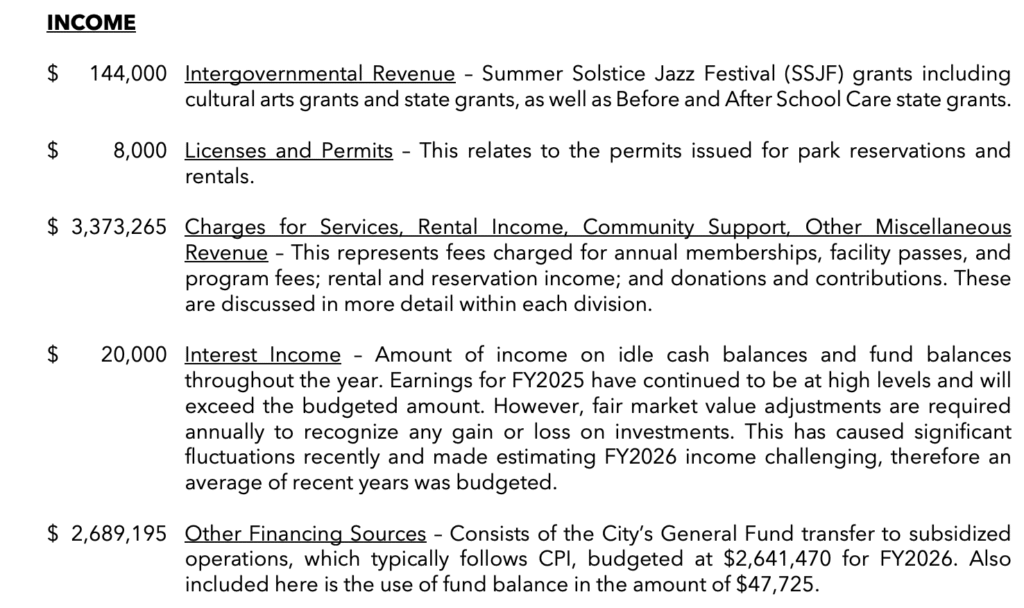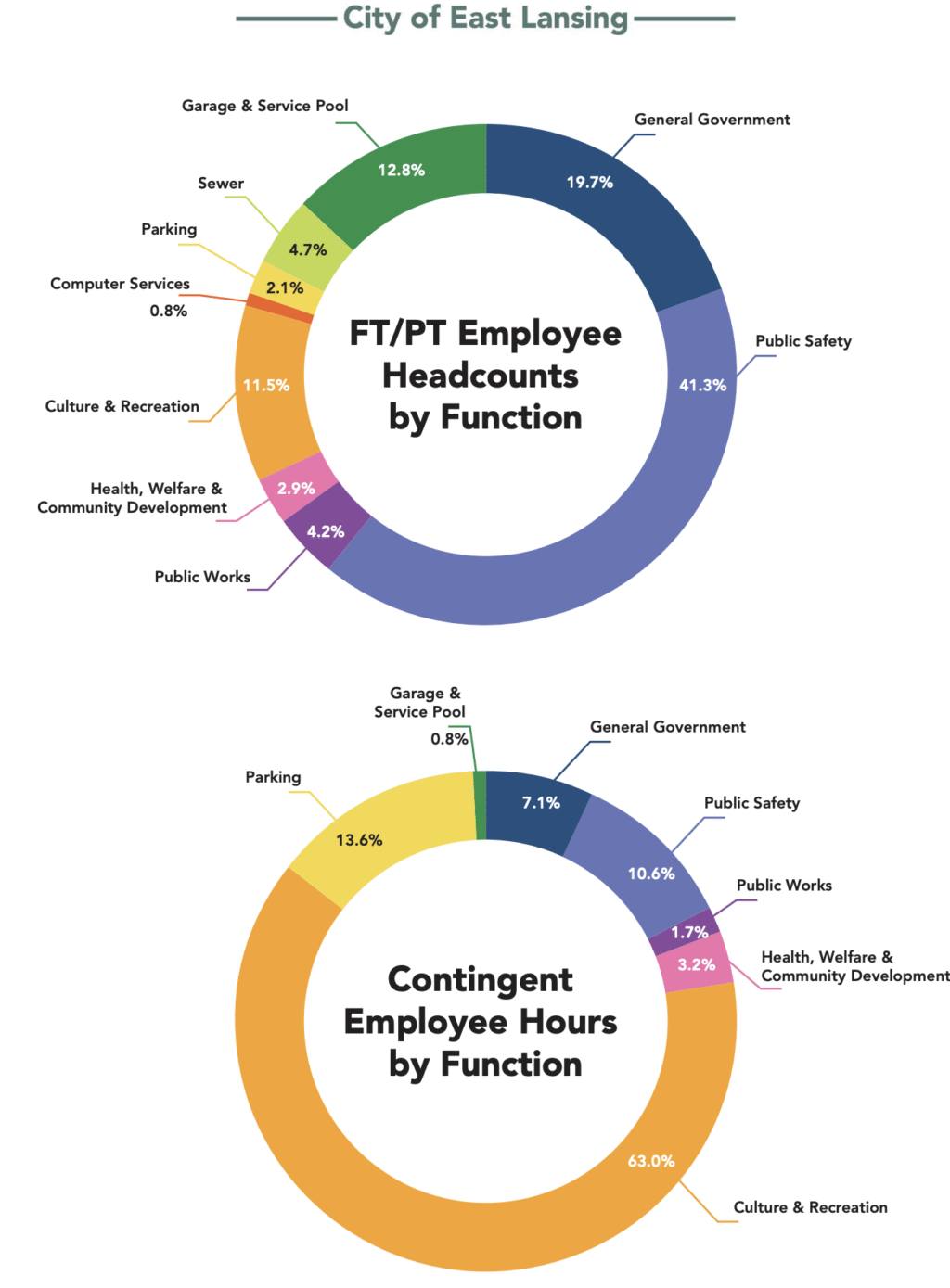Voters to Weigh Millage That Would Fund Parks and Ease Pressure on the City’s Budget Deficit
This November, voters will decide if they want to approve an increase in property taxes to fund a Parks and Recreation millage, which would insulate the department from future cuts as the city struggles with significant financial challenges.
The proposal is more controversial than past millages because it would raise the property tax cap currently in place. Some have also said it is a way to raise general taxes because the millage would replace the city’s general fund contribution to the parks department.
If the millage passes, property owners would see a two mill increase on their property tax bill. This means the owner of a property with a taxable value of $100,000 would pay an additional $200 each year. The millage is expected to raise about $2.9 million annually.
If voters reject the millage, the consequences for the parks budget are more difficult to decipher.
In May, City Council passed a budget for the current fiscal year that carries a more than $2 million deficit. Without adjustments, that deficit is expected to persist going forward, meaning the city will have to address it or face bankruptcy.
City Manager Robert Belleman proposed several solutions to the city’s budget woes earlier this year, with the largest piece being replacing the general fund’s contribution to the parks department with a millage.
However, if the millage fails, it doesn’t mean that the parks department loses the general fund’s entire contribution – more than 40% of its budget. Rather, city officials would likely look for places to make cuts or raise revenue across departments that the general fund contributes to. Some of these cuts could be to the parks department. If the millage passes, it would insulate the parks department from cuts.

The city’s next fiscal year begins in July 2026. Before then, City Council will set priorities and approve a budget. It’s not clear who all the decision makers will be because two of the five seats on council will also be decided in November’s election.
If the millage fails, it seems changes to the parks department would be on the table. A webpage the city created about the millage says the city’s budget issues could cause the parks department to reduce hours of operations in some facilities, lay off employees or limit program offerings.
Justin Drwencke has spent about six years working in the Parks and Recreation Department, primarily focused on capital projects and community events. Since he took over as the department’s interim director just over a month ago, he has spent time getting a more in-depth look at the department’s programs and learning about how they operate. Regardless of the outcome in November’s election, he wants to maximize his department’s funding.
“The people that are running these programs every day really know them inside and out,” Drwencke said. “Sometimes, just the process of me sitting down and asking questions about ‘Why is it this way?’ might open up some ideas for ways to maybe run those programs more efficiently, realize cost savings or increase revenue opportunities.”
Drwencke said at this point any number of changes could be on the table if the millage fails, depending on how much money is allocated to the parks department. He said Belleman has said staff layoffs should be a last resort option, and he feels the same way.
It’s hard to pinpoint what services in the Parks and Recreation Department could be at risk because the department’s expenses are spread across many facilities and programs. Short of mass staffing cuts or closing the Hannah Community Center – which would have broader impacts because it hosts employee offices, city activities and city meetings – there isn’t a single budget item that would significantly chip away at the city’s deficit if it were eliminated.
Drwencke clarified that park maintenance falls under the Department of Public Works’ budget. Additionally, large park infrastructure projects are funded by the income tax, often with the help of grant funding.
More than half of the parks department’s expenses are on personnel. The department employs 16 full-time employees and more than 150 part time and seasonal workers, according to the city’s millage information page.

Some of the department’s other expenses are on the various facilities it maintains, including the Aquatic Center, Hannah Community Center, Softball Complex and Soccer Complex. Drwencke said he would look to see if staffing levels could be more efficient at facilities, but making large blanket cuts to hours of operation would also limit the department’s ability to generate money.
“If we were to reduce, for example, the hours of the Hannah Community Center, the cost savings would not be substantial,” Drwencke said. “What we would actually be doing is likely losing a revenue opportunity. Because if we open later, we miss the group of community members who come in to use the fitness center in the morning or use the pool in the morning, and they might choose to take that membership elsewhere.”
The programs and facilities operated by the Parks and Recreation Department charge fees but are not designed to make big profits, as the city tries to strike a balance of keeping the facilities accessible, while not putting too much of a strain on the general fund. Some facilities will have a net positive impact on the budget one year and then a net negative the next.
Fees to access programs and facilities were raised this year after looking at what similar services charge. Drwencke said if the millage fails, fees may be increased, which was a possibility floated by Belleman during budget season. How much fees increase would be dictated by how much money is allocated from the general fund to help cover expenses
Drwencke hopes fees don’t increase to a level that some of the department’s most essential programs become accessible to fewer community members.
“We had on average 200 kids per day in this building either for drama camp or summer camp, through the child care program or other activities,” Drwencke said. “I think that’s a critical service for the community, to be able to provide some kind of child care in the summer when families are already trying to figure out how to cover that.”
The Aquatic Center more or less pays for itself, Drwencke said. Last year, the center lost money but this year it was budgeted to bring in nearly $50,000. Drwencke added that the Aquatic Center had its most popular month ever in July, leaving the possibility that it outperforms expectations.
Other facilities like the soccer and softball complexes have had a net negative impact on the budget in recent fiscal years. However, residents previously approved bonds to pay for these facilities. Drwencke said the last bond was paid off in about 2016, and there has not been a dedicated funding source to operate these facilities since.

Additionally, the millage could help the Parks and Recreation Department grow programs, Drwencke said. He explained that the department looks at what it wants to do with each program, and then has to figure out if it has funding to put those plans into action. If funding was guaranteed every year, staff could create long term plans to grow programs.
“This would allow us to plan ahead and know that we have dedicated funds coming in to operate our programs and services,” Drwencke said. “If you don’t really know what [funding] you’re going to get the next year, it’s hard to plan ahead.
As the city continues to work through its financial struggles, Drwencke is hopeful that his department is able to continue to offer its current level of services.
“I’m very proud of the programs and the services that we provide to the community,” he said. “It’s really personally rewarding and I think that it really creates a better place to live and work and go to school.”
The story was updated to correct the spelling of Drwencke’s name in two instances.

